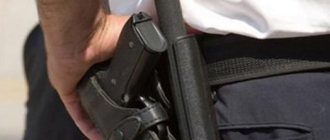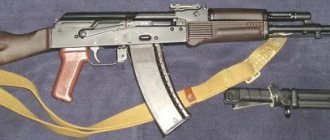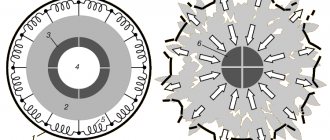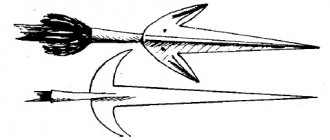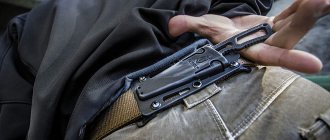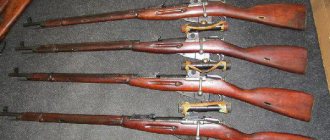Another massacre occurred in Las Vegas on October 1. Worst massacre in the United States: 59 people were killed, 527 injured. The killer is an ordinary person from the middle class: without addiction to alcohol, healthy, successful, not poor.
The killers found 23 firearms in their arsenal. Among them are automatic rifles for the US Army. People around saw the shooter carrying his suitcases, saw the weapon, and considered the situation normal. Is it really possible in the USA to go and just buy a couple of machine guns and then freely walk around the neighborhood with weapons? It is not that simple.
What weapons are allowed in the USA
The United States of America today is perhaps the only civilized country in the world in which the acquisition, carrying, and use of weapons is the norm.
US weapons legislation is considered the most loyal. According to universal American laws that apply to all citizens of the country, the average American has the right to own:
- short-barreled weapons (pistols, revolvers),
- smoothbore (hunting rifles, semi-automatic and automatic carbines, shotguns),
- automatic weapons (automatic, assault rifles and machine guns),
- grenade launchers, artillery pieces,
- tanks and other armored vehicles,
- helicopters and airplanes (!).
Large-caliber guns and certain types of ammunition are prohibited - armor-piercing, cumulative and inhumane cartridges. It is necessary to dismantle missile weapons on aircraft; cannon weapons are acceptable (it’s surprising that no one thought of shooting up a school or a hated office with air cannons). A separate ban applies to the acquisition, manufacture and sale of non-metallic weapons that are not detected by metal detectors.
Curious: a US resident can buy a machine gun. But - only a converted one, which is not considered an “assault weapon”. To ban, it is enough to match 2 characteristics from the list:
- bayonet,
- handle,
- folding stock,
- large detached store,
- flame arrester,
- hanging equipment,
- semi-automatic mode.
Therefore, many weapons manufacturers specially modify the models supplied to the general US market so that without serious modifications the weapons cannot be sold to ordinary buyers.
Despite all the loyalty to firearms, US legislation takes a harsh view of the cold: in most states, the carrying of folding knives with a spring mechanism for opening is prohibited. So, the usual “butterflies” with a blade length less than a palm are grounds for arrest here.
A non-US citizen can also purchase a weapon if he is in the country legally and is not prohibited from obtaining a license. A Resident card is enough.
Small Arms: ARE WE 30 YEARS BEHIND?
This has become a tradition - any article about Russian small arms must certainly contain strong expressions: “for the first time in the world” and “has no analogues,” and the general tone suggests sounding in unison with the famous song about how strong the armor is and how fast tanks are.
And, naturally, there must be a powerful blow, little bloodshed and enemy territory. The song, no doubt, is good. Like a work of art. Inspires, inspires and encourages. But usually a drill song has little contact with reality. And when reality no longer allows the cheerful march to sound and the formation begins to crumble, the story about weapons begins to resemble the speeches of friends and relatives of the deceased at the wake: only good things, only about the past and only with respect. It is apparently impossible to do otherwise when you perceive weapons as a matter of ideology, and not as a working tool. Nanotechnology has nothing to do with it
Russia's arms production turned out to be a hostage of the past, Soviet times, when in order to produce anything it seemed absolutely necessary to concentrate production in one place, giving rise to a city-forming enterprise, and the process of development, launching into production and production itself was accompanied by fat herds of scientists up to the academician and certainly what -the number of generals monitoring the process. The resulting monsters, as monsters should be, turned out to be inert, subject to the vices characteristic of giants: low mobility, extreme gluttony, laziness and conceit to match their size. Their satisfying life is also facilitated by the general concept of the place of small arms on the battlefield: the shooter is secondary, strategic weapons are primary. And what the shooter is armed with, in general, is not very critical for the outcome of the war in general and the battle in particular. And the shooter himself, recently called up from a village in the taiga region, must be armed with something that is very difficult to break and that cannot be used incorrectly. And then the giants fell on hard times. The country has changed, the concept has changed, from public favorites, accustomed to getting everything first, our monster weapons factories have turned into just factories. Moreover, they began to talk about the need to change something. The Ministry of Internal Affairs, for example, wanted a new pistol instead of the PM, which monsters had been carelessly churning out since the 50s, without knowing grief.
Yarygin pistol (ПЯ)
Pistol GSh-18
And the monsters for 18 years in agony and writhing gave birth to a new pistol, academicians wrinkled their foreheads, drawing boards smoked from the tension of design thought and: the mountain gave birth. She gave birth to a PYa pistol and gave birth to a GSh-18 pistol. The audience burst into applause befitting the occasion and pathos. Of course, they built a whole pistol, even two pistols. Let's take a closer look - how is a pistol made? Is it really true that in order to get a more or less functional pistol, you need a huge scientific base and, excuse me, nanotechnology? Apparently not.
Pistol K-100 Mk7, Grand Power (Slovakia)
In Slovakia, which gained independence in 1989, the K-100 pistol (similar in locking design to the mythical GSh-18), known in our country by its “traumatic” brother T-10, was designed and quite successfully produced. Apparently nanotechnology has nothing to do with it. Apparently, what is required is desire, a modern production base and a response to demand. And also mobility, inherent in smaller creatures than giants. The company, famous for its shovels, one day began making pistols. You know this company and, perhaps, this story, this is the enterprise of Gaston Glock. It may come as a revelation to readers, but hundreds and thousands of small arms manufacturers in the United States produce millions of rifles, pistols and submachine guns. Very often these workshops are a garage or a small workshop, where from 3 to 10 people work. They do not use advertised nanotechnologies in their work, and do not employ huge staffs of designers, academics and former army generals. Because you don’t need a general or an academician to make a machine gun or a rifle. An understanding of the subject and a desire to do a good job is required. If you manufacture products the way they do in Tula and Izhevsk, the next time they won’t buy an assault rifle or rifle, the manufacturer will go bankrupt, and another one will take his place, understanding and respecting the interests of consumers. For monsters who have been fed their entire lives without sparing dump trucks, this approach to the issue is incomprehensible. It’s difficult for a monster to survive, and he doesn’t even know how: he’s big, and he needs a lot at once. And, preferably, without effort. The body is huge, the parasites also correspond to their size, so you need to eat a lot and constantly. And I'm too lazy to move.
The monsters are leaving
The change in the political system in the early 90s led to a decrease in the volume of government orders from the most important customer - the Armed Forces. An attempt to reorient to the civilian market ended with an “unsatisfactory” rating. We were able to reorient ourselves, but we couldn’t make money. Because in a fit of rationalization and saving (which can be mistaken for elementary greed from the outside), they forgot about the quality control department. And if a carbine from Izhevsk, painfully reminiscent of an AK-74, has a front sight tilted to the side or simply sends bullets sideways at the target, then the buyer votes with rubles and will buy such a carbine only if it’s cheap. But over time, being cheap doesn’t help.
And the coveted monopoly, of course, is an object desired by the manufacturer, but vicious, since it inevitably leads to degradation. There is a good example - a motorcycle manufacturer, through its own efforts and then through the efforts of the state, became a monopolist in the US motorcycle market in the post-war years. The design idea fell into suspended animation, quality was gradually replaced by quantity, and then predators from Great Britain and Japan came, burst into the monster’s cozy enclosure, and the monster almost died. He had to lose a lot of weight and relearn how to move in search of food and what it was like to share his “hunting grounds” with young, agile competitors. The lack of government investment and the inability to make money on the civilian market have had their effect.
By 2000, when the state order from the Armed Forces and the Ministry of Internal Affairs appeared, the machine fleet became obsolete and the design teams degraded. The end result is a product that most closely resembles weapons from the World War II era, only with much worse workmanship. Because there is no qualified quality control department, and the worker, who for 10 years before this has been pushing defects into the civilian market, cannot wake up and produce high-quality parts. Habit and outdated equipment will not allow it.
The situation is aggravated by the fact that the end customer, the army or the Ministry of Internal Affairs, does not have an understanding of what needs to be ordered. The Main Rocket and Artillery Directorate and the leadership of the Ministry of Internal Affairs simply do not have a mechanism for developing technical specifications for weapons needed by today's users. You can't build an army without a military doctrine. You will not be able to issue tactical and technical requirements for development if you are far from the weapon and how to use it. At the same time, there is a reluctance to purchase the best foreign samples, bordering on paranoia.
GLOCK 17
What if there is war? So buy a production line, along with patents and developments. In response - weak, barely audible assurances that foreign samples will never pass the domestic test cycle. What if a full cycle of testing was carried out for all domestic products along with the best samples from foreign companies? What if we include criteria such as ergonomics and ease of use in the requirement? FSB units have been using Glock 17s since the mid-90s; experience with use has led to these models being included in the list of weapons adopted by the Ministry of Internal Affairs. Units of the Federal Penitentiary Service are armed with Glocks and CHZETs. Purchases of third-generation Glock 17 pistols have been made for fighters of the FSB TsSN in the last few years. Take data on service life and reliability, compare with any of the domestic pistols of a similar class and build next to it in St. Petersburg. In response, the mantra: “This affects the country’s defense capability!” The country's defense capability is affected by defects coming from Izhmash, Izhmekh or TsKIB. It impacts the lives of the fighters who use it even more. Or maybe it’s easier for the relatives of police officers who died from involuntary shots when using PP-90 and PP-93 because the deceased had something “unparalleled” in their hands?
Are we 30 years behind?
We must try to very accurately understand one idea for ourselves - in the production of small arms we remained somewhere in the late 70s - early 80s. In the field of optics, we are even further behind. Optical and collimator sights from the world's best manufacturers are absolutely superior to domestic products in weight, resolution, reliability and ease of use. Instead of the small-scale licensed production of Zeiss, Leupold or Nightforce, we get a monster called Hyperon, which is installed with fanfare on the SV-98.
Sniper rifle SV-98
Let's talk about slot machines? The AK-74 and its further development in the form of the AK-74M is a wonderful machine gun. He has served me faithfully for many years in different parts of our vast Motherland. Suffice it to say that in more than 30 thousand rounds of ammunition I shot, I had only two failures. Moreover, both were on MIA machine guns, which did not pass army acceptance. Together with 7N10 or 7N22 ammunition, it meets all the requirements of the modern Russian user. Accuracy, reliability and low recoil impulse, allowing for exceptionally accurate single-shot fire at a fast pace with the transfer of fire along the range and along the front. A very high standard for reliability is also important: it is now impossible to create a new assault rifle that is 1.2-1.3 times superior to the AK-74M in fire efficiency without loss of reliability. Any additional element introduced into the design is a potential failure. This is where the Germans stumbled with the G-11 project, and we also stumbled with the AN-94 and AEK machine guns. And without a corresponding increase in efficiency, there is no point in undertaking rearmament, because it is expensive. So expensive that in the modern world only the USA and, perhaps, China can afford it.
AEK-971
AN-94
However, it is 2009. This means that the modern battlefield is saturated with night vision devices, collimator and optical sights, and target designation devices (both in the conventional and infrared spectrum). Because in order to hit a target, it must first be seen. On the battlefield there are not and will not be tall targets and a “machine gunner” type profile located 250 meters from you. The question arises of equipping a modern machine gun with an optical or collimator sight, based on the tasks of the unit. This does not mean abandoning the traditional scope, because anything can fail and optics failures are inevitable. But equipping the AK74M with a low-power optical sight or a collimator with folding and mechanical sighting devices is modern. And the mechanical sight with a side rail for additional NSPU sights and so on is from 1974.
Closed collimator sight Aimpoint 9000 SC (2 MOA)
The practice of using collimator sights and “Aimpoint”, as well as optical sights, which are equipped with units of the FSB TsSN, has shown that their use can increase shooting efficiency, primarily by reducing aiming errors , which are especially evident when shooting from unstable positions. This is achieved due to the design of the sight, since small errors in the position relative to the sight do not affect the accuracy of aiming and therefore make it possible to aim the weapon faster than using traditional sighting devices. The effectiveness of fire when firing from an AK-74M from a standing/sitting/moving position at a range from 50 to 300 meters is improved compared to a mechanical sight by 1.1-1.4 times, depending on the sight used.
Speaking about the effectiveness of fire, you need to understand that accuracy has increased by 3-4 times, and aiming time has decreased by 1.5-2 times. Similar tests were carried out at the NPO “Special Equipment and Communications” for various models of domestic optical and collimator sights. Similar studies have been carried out in the UK since the early 80s and a little later in Germany and the USA. This led to the fact that the Bundeswehr received the G-36 rifle, equipped with a three-fold optical sight and a reflex collimator sight. The English rifle L85A1 and its modification L85A2 are equipped with a SUSAT 4X optical sight, which allows targeted fire at a range of 400-500 meters.
The US Marine Corps adopted the M16A3/A4 rifle with a Picatinny rail, allowing the installation of optical/collimator and night sights. At the same time, based on the results of clashes during Operation Restore Hope in Somalia and a comparison of the fire performance of rangers armed with rifles with mechanical sights and Delta fighters whose rifles were equipped with collimator sights, full-scale research began on equipping light small arms with sights of a new type. The result of these many years of research was the adoption of a collimator sight in 1997 with the first batch of 100,000 units and another 100,000 copies of the 4x sight in 2004. The commander of one of the US Marine divisions, Major General J.N. Mattis, commented on this contract as. In Russian conditions, such modernization is easily feasible if you attach a picatinny rail to the AK-74M receiver cover and change the design of the cover fastening. Also, changes will require sighting devices, namely the location and shape of the aiming bar.
The PCM design has long required similar changes. But the Main Rocket and Artillery Directorate is silent, and by inertia the academicians at Izhmash are also silent. The situation is aggravated by the fact that domestic manufacturers simply do not have a sight model that even comes close in characteristics to foreign analogues. Therefore, you will have to buy imported goods. But it’s unusual; the aura of superiority that traditionally surrounds our weapons interferes. In addition, soldiers armed with AK-74 have to perform tasks in different climatic zones of our vast Motherland. And the length of the butt remained unchanged, although it is clear that the butt to the machine gun will be different for fighters wearing a padded jacket, body armor or a set of summer uniforms. Is it difficult to issue a technical requirement for equipping an AK-74 with a sliding buttstock with several positions? Where are you, specialists from the Main Rocket and Artillery Directorate? Haven't you seen the photograph of the Commander-in-Chief? And didn’t you notice that only the metal parts and magazine from the PKK remained Russian in this machine gun, and everything else was bought by the fighters, often with their own money?
The soldiers can't shoot?
Or should we touch on the topic of submachine guns? And let’s find out that the best Soviet submachine gun (in terms of simplicity and quality of manufacture) is the PPS-43? Hastily put together Cypress, Kedr: Or a fighter’s nightmare in the form of PP-90 or PP-93, born from the imagination of a man who in the early 90s decided that, in addition to guns and grenade launchers, he could design submachine guns: All this is evidence that how far the designers' plans are from the employees' requirements. The creation of the PP-19 took several years and consultations with members of the detachment before a product was obtained that could be submitted for a test cycle. I sincerely hope that the problems that arose during testing with individual parts of the trigger will be eliminated. And this software will be closer in reliability to its famous ancestor.
PP-90M1
PP-93
PP "Kiparis" 9 mm, OTs-02 (TKB-0217)
Kedr PP-91 submachine gun
An attempt to create a compact submachine gun chambered for the 9x19 cartridge turned into an embarrassment in the form of the PP-2000. All those who managed to test this weapon noted the extremely low quality of workmanship, failures and breakdowns when firing from 10 to 1000 rounds, and low shooting accuracy when firing in bursts. Not to mention the fact that the Ministry of Internal Affairs adopted a completely different submachine gun from the one that was once tested at the Rzhevka training ground. The resulting mechanism has inherent defects of a modified trigger design, which leads to the fact that in the event of a breakdown, the weapon begins to fire only in bursts. Quite strange against this background is the position of the developers from TsKIB, who, visiting units equipped with these submachine guns, continue to claim that their products have no analogues. And to objections and reports of shooting they answer in unison: “Your fighters don’t know how to shoot.”
Submachine gun PP-2000
All this leads to the fact that people stop trusting the weapons with which they go on duty, and remember with kind words the AKS74U and PM they received before.
I do not praise the “bitch” and do not exaggerate the merits of PM. But if you ask any employee of the Ministry of Internal Affairs, you will find out that he wants to receive a PM and preferably one from the 60s, the quality of which will not cause any complaints. The quality of the metal now supplied to Izhmekh and Izhmash and the obsolescence of the machine park have led to the fact that any of the seized Chinese TTs or 1911s, of which more than a dozen have passed through my hands, are made of better quality than the PM, PYa and GSh-18 combined
. It is strange that in a cardboard box, carefully tied with a ribbon, they do not put a file, sandpaper and a bar of GOI paste into the bargain. Poorly fitted parts, distinct milling marks, overheated mainsprings are the hallmark of pistols produced since the mid-90s. The declared lifespan of modern Russian pistols alone, 4000-5000 rounds, speaks for itself. If we assume that at the end of its service life the pistol will break, then it turns out that the FSB special forces soldier needs to be issued one new pistol per year. Is it worth remembering the Glock with its 100,000 round lifespan and lifetime warranty?
Speaking about the quality of weapons, I cannot help but mention one thing. The weapon, accepted by the army, has never let me down. Colleagues in the Ministry of Internal Affairs had to encounter machine guns in which the chrome plating of the barrel fell off in pieces. There is simply no point in remembering littered front sights and sighting bars that match them.
What to do?
Separately, I would like to consider the answer to the eternal question “What to do?” If we talk about the arms industry in general, then the inclusion of foreign samples in the competition will make itself felt almost immediately. Fortunately, purchases through the GRU are still carried out regularly, and it is not difficult to get any machine gun or machine gun through friendly intermediary companies. No matter what fellow citizens full of patriotism say about the purchase of English AB rifles for the army, the fact remains that there are no analogues of these rifles among the range of Russian rifles. And if we also take into account the price of domestic SV-98 rifles in government procurement in the amount of $8,000, then it is easier and cheaper to purchase a factory from the British that produces much higher quality weapons.
Perhaps the emergence of small arms production or the separation of the small arms division from Izhmash into a separate enterprise would have played a role. But this is the task of managers, and I am a user. Although even the user understands that the quality situation is not the machinations of competitors, not the sabotage of Western intelligence services, but the many years of daily activities of enterprise managers who fail to cope with their responsibilities. Is it worth remembering that in the 70s, the weapons of the same TsKIB were on the same level as recognized brands of the world industry.
But in order for a trader, turner or engraver to do their job, they need to be paid. It is necessary to develop a network of vocational schools where young specialists can be trained. It is necessary to introduce the institution of acceptance within the structure of the Ministry of Internal Affairs so that such phenomena as Zarya special equipment exploding in the hands or a misunderstanding in the form of 5.45 PRS cartridges will never again find its way into the structure of law enforcement agencies. Of course, this will require money, which is always in short supply. Then it would be reasonable to carry out this acceptance by army specialists with an appropriate test cycle. Because those who make any changes to the design of weapons without carrying out a full cycle of tests not only reduce the cost of production, but also violate GOST. And this is already a crime. The developers’ assurances that “we carried out tests” do not inspire confidence in me personally. Finally, taking into account the forgotten experience of the Soviet Union, each broken weapon must be returned to the manufacturer with a completed malfunction form, which indicates the firing, shooting conditions and events preceding the breakdown. This helps the manufacturer collect statistics and quickly make changes and improvements to the design. Given the rapidly aging and dwindling fleet of aircraft, ships, submarines and heavy equipment, talk of small arms seems like a bad joke. But modernization is not always a quick process. It will take time to obtain specific usage statistics. Therefore, equipping one or two GRU special forces brigades or the 76th Airborne Division with small arms with optics as an experiment seems justified. The presence of a large number of ongoing shootings and tactical exercises will allow us to quickly identify the weaknesses of the equipment used.
How states regulate guns
The United States is a federation, and each state has its own rules governing the circulation and carrying of weapons .
Yes, anyone can buy a “barrel” - but then the questions begin. There are 2 types of gun permits in the United States: concealed carry permit and open carry permit.
Open carrying of weapons is now legal in 23 out of 50 states. Unrestricted carrying of concealed weapons is allowed in 38 out of 50 states. Visually on the map, each of them corresponds to:
You can do without a license in the “white states” - Alaska, Vermont and California, where Los Angeles is located and Stephen Paddock . Purchased weapons do not need to be registered here, and a license is not required when purchasing. But even here you can buy a weapon only after checking the buyer’s identity.
The verification consists of checking documents and filling out a short questionnaire. Moreover, the check is carried out both in the store and when buying from hand (otherwise this is bandit smuggling).
In the cities with the highest crime rates - New York, Chicago, Los Angeles and Washington, owning a pistol or revolver is prohibited. In California, to purchase a short-barreled weapon, you will have to wait 15 days, during which the police will conduct an inspection.
Wisconsin and Illinois have the strictest laws, with the latter prohibiting carry. In Connecticut, after the Sandy Hook massacre, there is a ban on magazines with a capacity of more than 10 rounds.
Bonus Tip #2: Best Gun in the Car
Last but not least, we have another useful tip: what is the best weapon to use while driving? Again, we highly recommend that you use the AP pistol , which can hold 36 rounds with a large magazine.
Alternatively, the Micro-SMG is also a good choice, but only has 30 rounds in the magazine. The high rate of fire of both types of weapons makes one of the two pistols irreplaceable.
Who can buy guns in the USA
How are weapons purchased in the USA? Let's look at the map again. If the state is painted “white”, you need to come to the store, choose the “barrel” you like and pass the test. The seller will review the buyer’s documents, call the police and ask you to fill out a short form. If a citizen has no serious offenses, he takes the weapon and can carry it secretly.
Permission to purchase a pistol or revolver shall be refused in relation to the following persons:
- having a criminal record with a term of imprisonment of more than a year;
- drug addicts and mentally unstable;
- illegal immigrants;
- expelled in disgrace from the armed forces;
- renounced American citizenship;
- persons under 21 years of age and some others.
A pistol permit can be obtained at age 21; for a smoothbore shotgun or carbine - from 18 years of age. More than 95% of applicants receive permission to purchase a pistol or revolver.
Those left without it are victims of the mistakes of the bureaucratic machine (wrongly filled out or sent documents to the wrong place, and even the coincidence of the name, date and place of birth with the data of some criminal) or from their own carelessness (they have unpaid fines, including for illegal parking) .
In “blue” and “yellow” states, a certain amount of time passes from application to receipt of a pistol permit. On average - a week; in California - 15 days; in New York, Massachusetts, Illinois and a number of others - a month.
If you look at unofficial statistics, segregation occurs in states with a strict attitude towards issuing guns. According to a local resident:
No one will allow a ghetto welfare recipient to buy a gun. However, a successful businessman from a prosperous area will easily receive a license.
American standards
Let's look at the NIJ body armor classes:
- type 1. Stops a bullet fired by a 22-caliber rifle with a lead tip, weighing no more than 2.6 grams and at a speed of no more than 320 meters per second. If there is a metal shell - no more than 6.2 grams and 312 meters per second;
- type 2 A. Designed for protection against a 9 mm blunt-pointed bullet with a metal jacket, weighing no more than 8 grams and at a speed not exceeding 332 m per second, as well as what was listed in the first paragraph;
- type 2. The difference from the second class is only in the impact speed, in this case it can reach 358 m/s. Will protect you from shooting 357 Magnum, the bullets of which are in a soft shell. Combines the properties of the first points and provides higher performance: up to 10.2 g and up to 427 meters per second;
- type 3 A. It exceeds the previous point in mass, it can reach 15.6, which corresponds to 44 Magnum;
- type 3. Protects against a rifle with a caliber of 6.62 mm, against bullets with a blunt end in a metal jacket weighing up to 9.6 grams and a speed of up to 838 m/s;
- type 4. The last and most powerful, from the armor-piercing rifle, which fires 30 caliber. The mass of such bullets is 10.8, the impact speed is at least 869 m per second.
How many guns are there in the US?
Statistics say: US citizens own 230 million firearms, including 75-80 million pistols and revolvers. Thus, half of American households, or 50 million American homes, own firearms. On average, there are 4 trunks per family.
Local joke: firearms are the most common sports accessory in the United States after a pair of sneakers.
The quantity of weapons is due to the ease of obtaining and low cost. See for yourself:
Modern body armor
The first sample appeared in the 50s of the last century, it was made by the Americans to participate in the Korean War. They analyzed the statistics of injuries and realized that most of them were hit by fragments with low kinetic energy. The solution was a complex of several layers of nylon and nylon, durable and lightweight materials. The first mass model was the M 1951; it was produced in the amount of 31 thousand units. Even with reinforcement with aluminum inserts, the weight was 3.5 kg. The materials could not stop bullets, but saved them from shrapnel.
In the 80s, the world started thinking about standardization; the Soviet Union drew up its own requirements in 1984. However, they did not receive practical distribution and worked only on paper. After the collapse of the Union, there was turbulence, and this made even civilians think about their safety. This became another incentive for the introduction of armor protection standards. It took many years to formulate uniform standards, as different departments had different visions.
The result was the emergence of GOST R 50744-95 and a certification system for goods in the category of personal protective equipment (PPE), which continues to operate to this day. To obtain a certificate of conformity, products must be provided with the necessary documentation and pass the required checks. Other countries have introduced their own standards: in the USA - NIJ, in Germany - DIN, there is a single European standard, designated CEN. The main criterion for classification in any case is protective qualities.
How do Americans feel about guns?
Gallup polling shows that Americans' attitudes toward firearms have changed significantly over the past half century.
If in 1959, 60% of respondents approved of a ban on carrying weapons for everyone except police officers and other persons permitted by law, then in October 2009, 71% of Americans surveyed were against such a ban. The territorial principle is clearly visible in the attitude of Americans towards weapons. The most anti-gun communities are on the Atlantic Coast of the United States: New York, New Jersey, Massachusetts, the District of Columbia and Maryland. The ban on the free sale of weapons is also supported by the majority of residents of California and Illinois.
According to statistics, about 40% of men and 55% of women in the United States are in favor of tightening legislation. However, this in no way saves us from murders according to the Los Angeles scenario.
They are opposed by the National Rifle Association (NRA), which includes many politicians, businessmen, actors and other influential people. It was created in the United States in 1871 and now has 2.8 million members who defend the constitutional right to own and bear arms.
An important role in the proliferation of weapons is played by the police , who believe that armed citizens are the most effective tool in preventing massacres. According to reports, armed citizens have only recently prevented or stopped massacres:
- school in Pearl, Mississippi
- school in Edinboro, Pennsylvania
- at a restaurant in Winnemucca, Nevada,
- at a church in Colorado Springs, Colorado.
Why does Russia need so many NIB classes?
There is a rational explanation for such diversity. The most comprehensive standards in the world are the European CEN and Russian GOST. They take into account all the nuances and help to better control the quality of products. Our standards, like body armor, are not inferior in level to world standards; they take into account all modern safety requirements.
Moreover, our GOST is the most stringent in the world, which means that every NIB item undergoes a thorough check.
For clarity, it is necessary to compare it with other states and their requirements. According to domestic standards, the extra-barrier displacement should be no more than 20 mm. By comparison, Western countries and the United States in particular allow higher deviations.
Another reason for the large number of subparagraphs is the prevalence of small arms and the large number of models. Many types of body armor allow you to choose the one that suits the task. It is necessary not only to protect the owner, but also not to create unnecessary difficulties for him, so it is impossible to equip everyone with the highest class.
For example, a police officer who maintains order in an ordinary public institution is unlikely to face the need to defend himself from a rifle, and he certainly does not need protection from armor-piercing cartridges that snipers use. But he will periodically encounter attackers armed with traumatic and bladed weapons, TT and Makarov pistols. One of the branches of criminology, criminal statistics, deals with tracking such patterns. And this science suggests that such a police officer, as well as security guards and cash collectors, do not need body armor to protect against all types of firearms.
Thus, when choosing the optimal armor, it is necessary to balance between good protection and optimal mobility. These parameters have a relationship: the higher the degree of protection, the heavier the kit will be, the less mobile its owner will be. On the battlefield, such an inactive person becomes an easy target, so blindly choosing the most protected class is inappropriate even for the military.
That is why our classification is so detailed. The armor class is chosen to add as little weight as possible while still taking into account all possible threats and taking measures to minimize them. The more points in standardization, the more accurately you can choose. Despite the fact that our classification is one of the most strict and detailed in the world, it is constantly being improved. Therefore, NIB standards are constantly updated with new classes.
Why are guns so important to America?
“The Man with the Gun” is the arbiter of American history, its main tradition, the iconic figure of its righteous and villains, the fiend of evil and the warrior of good. The US Supreme Court writes this about the right to own guns:
“The possession of weapons is sacred, and woe to those who encroach on them: in the face of this inviolable right, even federalism retreats, the legislative power of individual states does not act.”
Even more interesting are quotes from Professor John Lott, “More Guns, Less Crime: Towards Understanding Crime and Gun Control Legislation.” The author confirms that owning and carrying weapons by law-abiding citizens reduces the number of violent crimes:
- criminals fear armed resistance,
- an armed victim of criminal attacks has a better chance of defending himself.
J. Lott, analyzing national statistics, discovered that:
The more the population gains the right to bear arms, the more violent crime decreases. “Every year the law on concealed carrying of pistols and revolvers is in effect, the murder rate decreases by 3%, rape by 2%, and robbery by more than 2%.” At the same time, neither the level of accidental deaths from careless handling of weapons nor the number of suicides with their help increases.
NRA
statistics, no more than 7% of armed criminals acquired weapons legally, while others use smuggling and other illegal supplies.
The NRA confirms the effectiveness of self-defense with even more clear figures. Thus, in Washington, the ban on carrying concealed weapons from 1976 to 1991 acted as a catalyst: the murder rate tripled, although during the same period throughout the country it increased only by 12%.
California's murder and violent crime rates are 28% and 32% higher, respectively, than the nation as a whole. And in Virginia, where a permit is obtained directly from the store without a “probation period,” there are 34.6% fewer violent crimes, 3.7% fewer murders, and 76.9% fewer robberies.
Surprisingly, freely carrying weapons even reduces the number of mass shootings like what happened in Los Angeles. Since the passage of concealed-carry laws, the number of victims of mass murderers has dropped sharply. Between 1977 and 1995, this figure fell by 91% .
What do you think about freely carrying weapons?
( 12 votes, overall rating: 4.67 out of 5)
